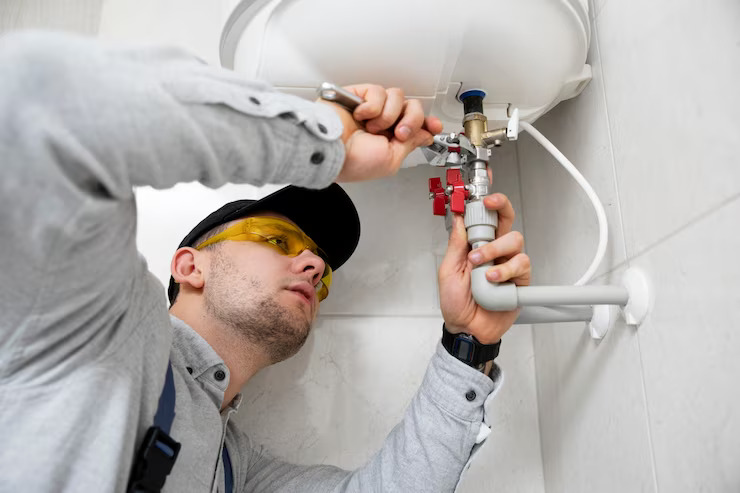Water is a precious resource, and its conservation is of paramount importance in today's world. One of the significant challenges in water management is the detection and prevention of leaks. Water leakages not only lead to significant water wastage but also result in substantial financial losses. In recent years, the field of water leak detection has witnessed remarkable innovations, driven by advancements in technology and a growing awareness of the need for efficient water management. In this comprehensive exploration, we will delve into the latest innovations in water leak detection and where you can find them.
Traditional Methods vs. Modern Technologies
Before we embark on the journey of discovering the latest innovations, it's crucial to understand the evolution of water leak detection methods. Traditional methods relied on visual inspection, acoustic listening devices, and manual monitoring. While these methods have been effective to some extent, they often fall short in detecting hidden leaks and can be time-consuming.
Enter modern technologies. Advanced sensor technologies, artificial intelligence (AI), and the Internet of Things (IoT) have revolutionized water leak detection. These technologies enable real-time monitoring, data analysis, and predictive maintenance, significantly enhancing the efficiency and accuracy of leak detection.
Advanced Sensor Technologies
Sensor technologies play a pivotal role in the latest innovations in water leak detection. Smart sensors, equipped with various capabilities, are deployed in water distribution systems to detect anomalies in water flow, pressure, and temperature. These sensors can pinpoint the location of leaks and provide crucial data for proactive maintenance.
Fiber optic sensors are another cutting-edge technology making waves in water leak detection. By utilizing the principle of distributed sensing, these sensors can detect changes in temperature and strain along the fiber optic cables, allowing for precise identification of leaks.
Artificial Intelligence and Machine Learning
The integration of artificial intelligence and machine learning has brought unprecedented capabilities to water leak detection systems. These technologies can analyze vast amounts of data in real time, identifying patterns and anomalies that might indicate a potential leak. AI-powered algorithms can also learn from historical data, improving their accuracy over time and reducing false positives.
The application of AI in water leak detection is not limited to data analysis. Machine learning algorithms can be trained to differentiate between normal water flow patterns and those indicative of leaks, enhancing the overall reliability of detection systems.
Internet of Things (IoT) in Water Leak Detection
The Internet of Things has transformed the way we connect and communicate with devices, and water leak detection is no exception. IoT-enabled sensors and devices can be strategically placed throughout water infrastructure to create a comprehensive network. These devices communicate with each other and central control systems, providing real-time data on water conditions.
The interconnected nature of IoT devices allows for swift response to potential leaks. Automated alerts can be sent to maintenance teams or water utilities as soon as irregularities are detected, enabling quick intervention and minimizing the impact of leaks.
Satellite Technology and Remote Sensing
In remote or expansive areas where traditional monitoring may be challenging, satellite technology and remote sensing come into play. Satellite imagery can be used to detect changes in land surface temperature or vegetation patterns, indicating potential water leaks underground.
Advanced remote sensing technologies, such as synthetic aperture radar (SAR), can penetrate the ground and identify subsurface changes. These technologies offer a broader perspective, making them valuable tools for monitoring large-scale water distribution systems and identifying leaks in challenging terrains.
Acoustic Leak Detection
While not a new concept, acoustic leak detection has evolved with technological advancements. Traditional acoustic listening devices have been replaced by highly sensitive sensors capable of detecting the faintest sounds associated with water leaks. These sensors can be deployed in pipelines or on the ground, providing a non-intrusive and efficient method of leak detection.
In addition to ground-based acoustic sensors, underwater listening devices have become instrumental in identifying leaks in submerged pipelines. These devices utilize hydrophones to detect acoustic signals, allowing for precise localization of leaks in underwater infrastructure.
Commercial Solutions and Innovations
Several companies and startups are at the forefront of developing and implementing innovative water leak detection solutions. These commercial solutions often integrate a combination of advanced technologies to offer comprehensive and reliable leak detection services.
Some companies specialize in providing IoT-based leak detection systems, offering turnkey solutions for water utilities and industrial facilities. Others focus on developing AI-powered analytics platforms that can process and analyze data from various sources to identify potential leaks.
Research Institutions and Academia
Research institutions and academic centers are essential contributors to the ongoing advancements in water leak detection. These institutions often collaborate with industry partners and government agencies to conduct research, develop prototypes, and test new technologies.
Innovation hubs within universities may house interdisciplinary teams working on projects related to water management and infrastructure. These teams explore novel approaches to water leak detection, contributing valuable insights to the field.
Government Initiatives and Regulations
Government agencies play a crucial role in promoting the adoption of advanced water leak detection technologies. Many countries have recognized the importance of water conservation and have implemented regulations that incentivize the use of innovative leak detection systems.
Government initiatives may include funding programs for research and development, subsidies for water utilities investing in modern leak detection technologies, or the establishment of standards and guidelines to ensure the reliability and accuracy of these systems.
Conclusion
The landscape of water leak detection has undergone a remarkable transformation, propelled by advancements in sensor technologies, artificial intelligence, the Internet of Things, and other innovative approaches. The integration of these technologies has not only improved the accuracy of leak detection but has also enabled proactive and timely interventions, reducing water wastage and financial losses.





Comments